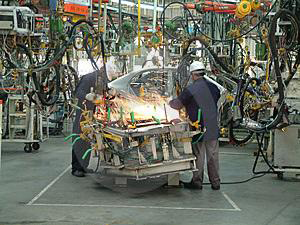Do Not Turn A Deaf Ear To A Noisy Working Environment
Not just a nuisance but a danger to your health and well being

Whether you work in manufacturing, engineering, construction, or in an office environment, the incessant noises of machinery or even noisy work colleagues can have an effect on your wellbeing after a while. But the problems associated with noise run much, much deeper than this.
It can lead to severe and permanent loss of hearing, as well as a significant rise in blood pressure and stress. And the potential indirect effects are equally dangerous - hazards and warning signals can be masked and concentration impeded, leading potentially to accidents, injuries and mistakes.
Workers who are regularly and consistently exposed to noise levels of around 85dB upwards are all at risk. And companies who fail to adhere to noise control regulations are exposing themselves to potential costly claims, investigations and criminal prosecutions from their employees. It is worth noting that there has been a progressive and significant increase in the number of Noise-Induced of Hearing Loss claims (NIHL) since 2001 and that 60,000 new claims notifications were received in the UK in 2013.
So what can be done to protect your employees from the dangers of excessive noise in their working environment, and what is required of your company by law?
EU law requires that all companies with noisy areas (generating noise levels of around 80-87dB or more) must have regular noise assessments, carried out by a qualified member of staff or noise consultant using a compliant noise level meter. This noise level meter must meet IEC 61672 regulations which is the current standard for noise level meters and be of Class 2 standard or above.
Where noise levels are above the specified limit, whether this is affecting the whole company or just an individual worker, noise control measures should be put in place as far as possible. Old, noisy equipment could be replaced with newer, quieter machinery and sound proofing equipment could be installed, for example.
When noise levels reach 80dB, you should make hearing protection available to staff. At this stage, if the offending noise cannot be controlled by introducing controls or technical amendments such as encasing of the noisy equipment then the use of hearing protection is mandatory. When noise levels hit 85dB or above, hearing protection absolutely must be worn.
Staff must be provided with adequate information about the dangers to which they could potentially be exposed and how these could affect them. Noise awareness training must be delivered by a qualified health and safety officer or noise consultant, with specialist help if this is required.
Effective noise monitoring in the workplace and control won’t just alleviate stress levels; it will also help protect your staff’s hearing, and could even improve concentration and productivity.
Pulsar Instruments supplies a range of noise level meters that are designed for use by safety professionals in a wide range of working environments. Pulsar Instruments also provide one-day noise awareness training courses.
CONTACT
Pascale O'Rourke
Pulsar Instruments Plc
pascale.orourke@pulsarinstruments.com
www.pulsarinstruments.com
+44 (0) 1723 518011
Saturday 5 July 2014 / file under Utilities | Environmental | Engineering | Construction



